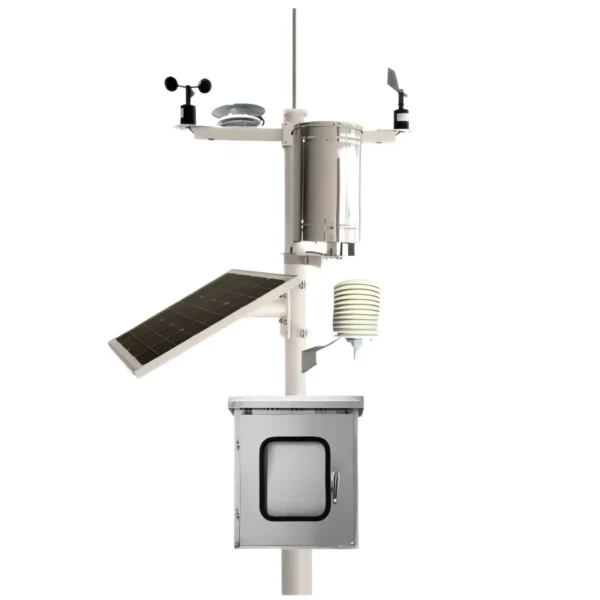
# Understanding the Functionality of Automatic Weather Stations
Automatic Weather Stations (AWS) are advanced systems designed to collect and record meteorological data without the need for constant human intervention. These stations are crucial for providing accurate and timely weather information, which is essential for various applications such as agriculture, aviation, and disaster management.
## What is an Automatic Weather Station?
An Automatic Weather Station is a collection of instruments and sensors that measure atmospheric conditions such as temperature, humidity, wind speed, wind direction, rainfall, and barometric pressure. These stations are typically equipped with data loggers that store the collected data, which can then be transmitted to a central database for analysis and dissemination.
## Components of an Automatic Weather Station
An AWS typically consists of several key components:
– Sensors: These are the primary instruments that measure various weather parameters. Common sensors include thermometers for temperature, hygrometers for humidity, anemometers for wind speed, and rain gauges for precipitation.
– Data Logger: This device records the data collected by the sensors. It can store large amounts of data over extended periods and often includes features for data transmission.
– Power Supply: AWS units are usually powered by solar panels or batteries, ensuring continuous operation even in remote locations.
– Communication System: Many AWS units are equipped with wireless communication systems, such as GSM or satellite links, to transmit data to a central server in real-time.
## How Does an Automatic Weather Station Work?
The functionality of an AWS can be broken down into several steps:
– Data Collection: Sensors continuously monitor and measure atmospheric conditions. For example, a thermometer will record temperature readings at regular intervals.
– Data Logging: The data logger collects and stores the information from the sensors. This data is often timestamped to provide a chronological record of weather conditions.
– Data Transmission: Depending on the setup, the data logger may transmit the collected data to a central server via wireless communication systems. This allows for real-time monitoring and analysis.
– Data Analysis: Once the data reaches the central server, it can be analyzed using specialized software. This analysis helps in generating weather forecasts, climate studies, and other meteorological reports.
## Applications of Automatic Weather Stations
Automatic Weather Stations have a wide range of applications:
– Agriculture: Farmers use AWS data to make informed decisions about planting, irrigation, and harvesting. Accurate weather information helps in optimizing crop yields and reducing losses due to adverse weather conditions.
– Aviation: Airports and aviation authorities rely on AWS data to ensure safe takeoffs and landings. Real-time weather updates are crucial for flight planning and air traffic control.
– Disaster Management: AWS data is vital for predicting and monitoring natural disasters such as hurricanes, floods, and droughts. Early warnings based on accurate data can save lives and reduce property damage.
– Research: Meteorologists and climate scientists use AWS data for research purposes. Long-term data collection helps in understanding climate patterns and predicting future climate changes.
## Advantages of Automatic Weather Stations
There are several advantages to using AWS:
– Accuracy: AWS units provide highly accurate and reliable data, which is essential for making informed decisions.
– Real-Time Data: The ability to transmit data in real-time allows for immediate analysis and response to changing weather conditions.
– Cost-Effective: Once installed, AWS units require minimal maintenance and can operate autonomously, reducing the need for constant human supervision.
– Remote Monitoring: AWS units can be installed in remote and inaccessible locations, providing valuable data from areas that would otherwise be difficult to monitor.
## Conclusion
Automatic Weather Stations play a crucial role in modern meteorology and various other fields. By providing accurate, real-time weather data, these systems help in making informed decisions, ensuring safety, and optimizing operations across multiple sectors. Understanding the functionality and components of AWS is essential for appreciating their importance and the benefits they offer.
Keyword: what is automatic weather station